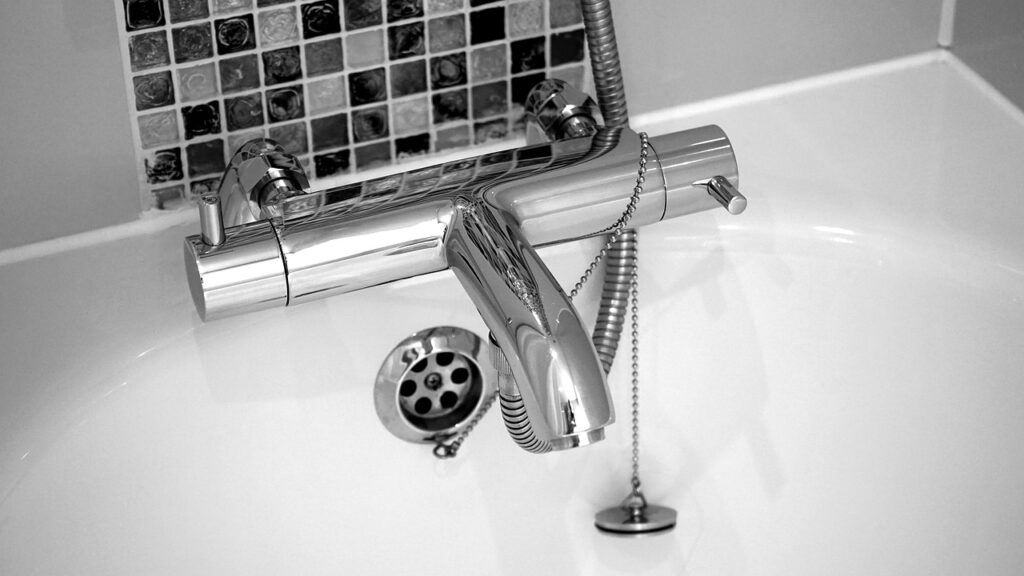Maintaining clean and clear drains is essential for the proper function of plumbing systems in homes and businesses. Over time, drains can become clogged with various substances, leading to slow drainage, backups, and potential water damage. Knowing how to effectively clean drains using different techniques can help prevent these issues and ensure your plumbing system operates smoothly. In this guide, we’ll explore comprehensive drain cleaning techniques, from basic preventive maintenance to more advanced methods for stubborn clogs.
Contents
1. Preventive Maintenance
Regular preventive maintenance is key to keeping drains clear and preventing clogs before they occur. Incorporate these practices into your routine to maintain healthy drains:
- Hot Water Flushing: Once a week, pour a kettle of boiling water down each drain to dissolve and flush away grease and soap scum buildup.
- Mesh Drain Covers: Install mesh drain covers over sink, shower, and tub drains to catch hair, soap residue, and other debris before they enter the drain.
- Baking Soda and Vinegar: Monthly, pour a mixture of baking soda followed by vinegar down drains. Let it fizz for 10-15 minutes before flushing with hot water to clean and deodorize drains.
2. Basic Drain Cleaning Tools
Before attempting more advanced techniques, familiarize yourself with basic drain cleaning tools that can effectively tackle minor clogs:
- Plunger: Use a cup plunger for sinks and a flange plunger for toilets to create suction and dislodge blockages.
- Handheld Drain Snake: A flexible wire coil with a handle used to manually remove hair, soap, and other debris from drains.
- Zip-It Tool: A thin, flexible plastic strip with barbs designed to pull out hair and gunk from sink and shower drains.
3. Chemical Drain Cleaners
Chemical drain cleaners can be effective for clearing minor clogs caused by organic matter, such as hair and soap scum. However, use them with caution and follow manufacturer instructions carefully:
- Types: Choose between caustic drain cleaners (sodium hydroxide) or oxidizing cleaners (bleach and peroxides), depending on the type of clog.
- Usage: Pour the recommended amount directly into the drain, let it sit for the specified time, then flush with hot water. Avoid mixing different types of cleaners.
4. Mechanical Drain Cleaning Techniques
For more stubborn clogs that basic tools and chemicals can’t clear, mechanical drain cleaning techniques provide a more aggressive approach:
- Plumbing Snake (Auger): Feed a plumbing snake into the drain to break apart and push through blockages. Choose a manual or electric snake depending on the severity of the clog.
- Procedure: Insert the snake into the drain until resistance is felt, then crank or activate the device to maneuver through and retrieve the clog.
- Hydro-Jetting: A professional-grade method that uses high-pressure water to blast away debris, grease, and mineral buildup inside pipes.
- Procedure: Insert a specialized nozzle attached to a high-pressure hose into the drain. Water is then propelled through the nozzle at extremely high pressure to scour the pipe walls and flush out blockages.
5. Removing P-Traps and Cleanouts
When clogs are located near the fixture or are particularly stubborn, accessing the P-trap (located beneath sinks and tubs) or cleanout (accessible ports on drain pipes) may be necessary:
- P-Trap Removal: Place a bucket under the P-trap to catch water and debris. Loosen the slip nuts using pliers or a wrench, then carefully remove and clean out the trap.
- Cleanout Access: Locate cleanouts on drain pipes near fixtures or in basements. Open the cleanout cap using a wrench to access and remove clogs manually or with a plumbing snake.
6. Enzymatic Drain Cleaners
Enzymatic drain cleaners use natural enzymes and bacteria to break down organic waste, making them environmentally friendly and safe for regular use:
- Benefits: Effective at breaking down organic matter, such as food particles and soap scum, without harming pipes.
- Usage: Pour the cleaner directly into the drain and allow the enzymes time to digest the waste. Follow with hot water to flush the drain.
7. Professional Drain Cleaning Services
For persistent or complex drain clogs that DIY methods can’t resolve, it may be necessary to call a professional plumber who can offer specialized equipment and expertise:
- Video Inspection: Using a small camera, plumbers can inspect the inside of pipes to locate the exact cause and location of clogs or damage.
- Rooter Services: Professional plumbers often use rooter machines equipped with rotating blades to cut through tree roots or tough clogs obstructing sewer lines.
- Preventive Maintenance Contracts: Consider scheduling regular drain cleaning and maintenance with a professional to prevent future clogs and maintain optimal drain performance.
Conclusion
Maintaining clean drains is essential for the efficient operation of your plumbing system and to avoid costly repairs due to clogs and backups. By incorporating preventive maintenance, using basic and advanced drain cleaning techniques, and knowing when to seek professional help, you can effectively keep your drains clear and functional. Remember to prioritize safety, follow manufacturer instructions for tools and chemicals, and consider the long-term benefits of maintaining a healthy plumbing system. With these comprehensive drain cleaning techniques, you can tackle clogs confidently and maintain the integrity of your home’s plumbing infrastructure.










